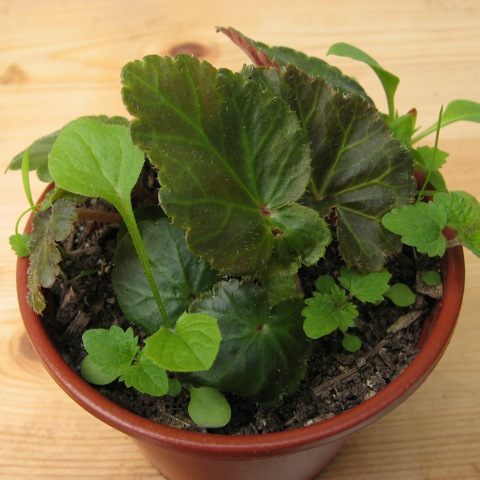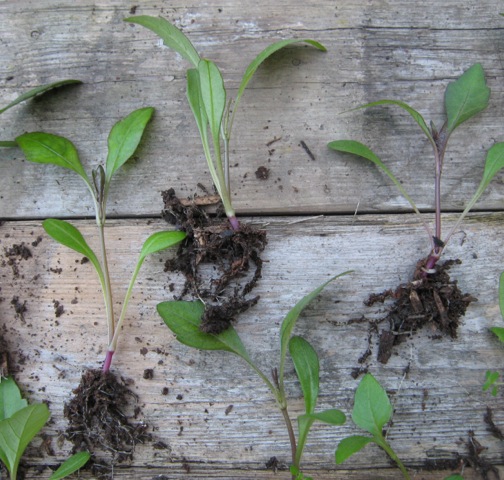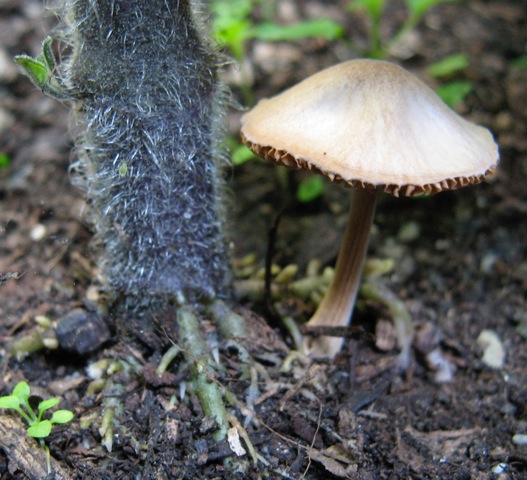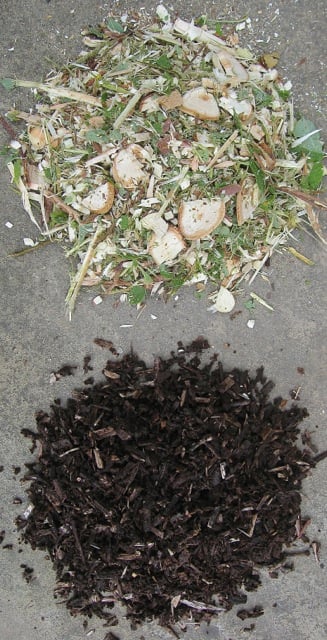Quality peat-free compost doesn’t need to come out of a bag, and it certainly isn’t sterile and sanitised. It’s time to rip up the rule book.
My idea of an adventure doesn’t require me to jet off on some adrenaline-fuelled, round-the-planet jaunt. Although I’m inherently curious – I love exploring new places – I don’t need to rack up the miles in search of ‘buzz’; footsteps will do. As a lifelong gardener, I feel as if I’ve been on a big, endless adventure since I took my first tottering steps, back in the days when clay flower pots were all we had.

Gardening is like that, an unending adventure, a journey without end. Every time some seeds come up, a cutting sprouts roots, or a bulb bursts into life, it’s the start of a new journey, watching that plant grow, mature, flower and/or bear fruit. Each year, season, month and day, when I walk through my greenhouse (it’s a lean-to) and out into the garden, I’m greeted by the lure of adventure. If there is such a thing as ‘green’ adrenaline, our gardens and allotments are surely where it’s at.
Apart from the biggest of all my gardening adventures over the last few years – winning a new terraced garden from a bracken-riddled Welsh hillside – the one that’s captivated me most has been one where I get to play around and experiment to my heart’s content. It’s an adventure that’s guaranteed to give me dirty fingernails, to throw up constant surprises, and to grow some half-decent plants. It’s one that’s making my garden more earth-friendly by the day, and it’s immersive, bordering on the obsessive. It’s also huge fun.

When I first began testing and trialling modern peat-free composts available to buy, to find out which were the good and bad doers, I was curious to see how they would fare alongside a basic home-made mix. I always have plenty of mature, three-year-old-plus leaf mould and worm-worked compost from ‘Dalek’ bins to hand, so I began with a simple mix of equal parts of each. I knew that compost that’s been worked over by compost worms is super-charged with plant foods and substances that stimulate plant growth, but the results with my DIY mix were outstanding, leaving several bags of peat-free that I’d paid for blushing with shame.
The various seeds and ‘plug’ plants I grew in my home-made multipurpose mix had strong healthy shoots and prolific roots, and they romped away, eventually producing respectable shows of flowers, and decent crops. I did nothing special; I didn’t add any fertiliser and I didn’t cook the mix in the oven or the microwave (I don’t possess one) to ‘sterilise’ it, as is often suggested. Yes, some seedling weeds did come up, but these were duly nipped out and didn’t hamper growth; mostly, plants seemed all the better for the presence of their accidental companions. The mix dried out more quickly than a quality bought peat-free, and plants needed feeding sooner, but for a garden-sourced, hyper-local sowing and potting compost, it was (and still is) a good doer. It was the start of an enduring adventure.
Countless bags of good, bad and occasionally ugly peat-free compost later, I’m still enjoying the thrill of experimenting with my own mixes, and I’m learning lessons along the way – the most important being that for plants to thrive, the compost you sow and pot them in must be alive. ‘Always use sterile compost’ is a throwback to the days when peat-based composts (peat is essentially lifeless and inert) were the only game in town. Nowadays, it’s also an ill-disguised bit of scaremongering intended to put folk off trying modern and nature-friendly peat-frees.

Plants will grow in ‘sterile’ compost, but I get the best results with peat-frees that contain life of their own (those pale moulds sometimes found inside compost bags are the sign of a biologically active mix) – and this is never more evident than when I use a DIY mix. But I’m hardly surprised; plants, wild or potted up, don’t grow in splendid isolation. They rely on all the interconnected life that we can’t see in soil, or in compost, not just for their food, but also for their vitality. Healthy plants are less susceptible to pests and diseases, and give better results. A few easily nipped-off weed seedlings are a small price to pay, and if you’re using a DIY peat-free for sowing, you can cover the seeds with a bought mix, so there are no weed seeds in the top layer.
Using biologically alive peat-free composts occasionally leads to disconcerting surprises. When tiny toadstools appeared among the roots of my potted greenhouse tomatoes, I panicked. Once past my fungi-must-be-bad alarm, it dawned on me that these plants, potted in a compost made largely from wood and bark chips, were clearly filled with zest. The fungi, feasting on the decaying wood and bark, released bonus plant foods (and who knows what else) that helped the tomatoes to crop magnificently. It’s no surprise to discover that some of the best-performing bought peat-free composts, such as SylvaGrow, are also based on mixes containing wood and bark.

Those toadstools spurred my adventure on. I’m now getting impressive results with sowing and potting using a refined home-made mix of equal parts of leaf mould, worm-worked compost and matured wood chips, gathered from those heaps you see along roadsides. These need to have slumbered for a year or more, allowing time for fungi and other soil life to have entered the heap and kickstarted the process of decay. I pass the chips (seasoned ones are brown in colour) through a fine sieve and they’re ready for mixing (the big bits make excellent mulch). Planning ahead, I’m also shredding any woody prunings and tough stems, storing them separately for my own garden-sourced chip supply. And there’s now a repurposed mini builder bag in the car boot, ready for roadside spoils.
If you’re the adventurous type, fuelled by curiosity, it’s time to get your fingers dirty. Start looking around and see what materials you might have that you can experiment with and turn into your own free and nature-friendly, peat-free mix. It’s time to get yourself hooked on trial and error, on trying out new things, on learning, and on having some fun.
Be warned, though: once you start, it’ll be impossible to stop.
Text and images © John Walker
Find John on Twitter @earthFgardener










